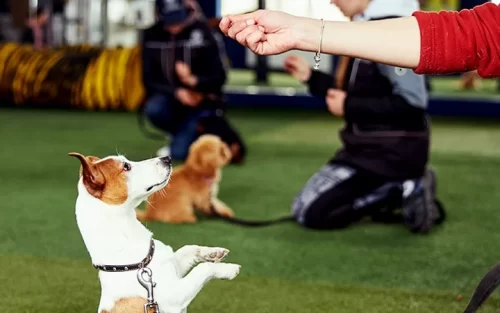Leash training your dog is an essential part of raising a well-behaved and obedient companion. A well-trained dog on a leash will not only make your walks more enjoyable but also keep them safe from potential hazards. Whether you have a new puppy or an adult dog that needs leash training, the process can be achieved with a little patience, consistency, and positive reinforcement.
Here’s a step-by-step guide on how to leash train your dog:
Step 1: Choose the right leash
The first step in leash training your dog is selecting the right leash. Choosing the right leash will depend on your dog’s size, behavior, and where you plan to walk them. The most common types of leashes include standard six-foot leashes made from leather, nylon, or fabric, and retractable leashes. Retractable leashes may not be the best choice for leash training, as they allow your dog to roam and pull, making it challenging to control them. It’s best to choose a fixed-length leash to begin with.
Step 2: Introduce your dog to the leash
Once you have chosen the right leash, you’ll need to introduce your dog to it gradually. Start by allowing them to sniff and get familiar with the leash. Once they’re comfortable, attach the leash to their collar or harness and let them drag it around the house for a short time. This will help your dog get used to the feeling of having something attached to them. Never leave your dog unsupervised with the leash on as they could accidentally injure themselves.
Step 3: Practice in a low-distraction area
When your dog is comfortable with the leash, you can begin leash training in a low-distraction area like your backyard or a quiet park. Hold the leash loosely and walk in a straight line while keeping your dog close to you. If your dog pulls or tries to run, stop walking, and wait until they calm down before continuing. Do not pull your dog back towards you or jerk the leash as this can hurt your dog’s neck or back.
Step 4: Use positive reinforcement
Positive reinforcement is a crucial aspect of dog training, including leash training. When your dog walks calmly beside you, reward them with treats or praise. This will encourage them to repeat the behavior. Avoid using punishment or negative reinforcement as it can make your dog anxious and fearful. When your dog pulls or misbehaves, stop walking, and wait for them to calm down before continuing.
Step 5: Increase the challenge
Once your dog is comfortable walking beside you in a low-distraction area, it’s time to increase the challenge by adding distractions like other dogs or people. Practice walking past them without your dog pulling or getting overly excited. If your dog pulls or misbehaves, stop walking and wait for them to calm down before continuing. It’s important to be consistent and persistent in your training.
Step 6: Practice in different environments
To ensure that your dog is well-trained, you need to practice leash walking in different environments. Take them for walks in busy areas, on hiking trails, and in unfamiliar places. This will help them get used to different sights, sounds, and smells, and prepare them for any situation. Gradually expose your dog to new environments to prevent overwhelming them.
Step 7: Be patient
Remember, leash training takes time and patience. Some dogs may learn quickly, while others may take several weeks or even months to master. Be calm and positive during the training sessions, and always reward your dog for good behavior. With consistent training and practice, your dog will soon be a well-behaved and happy companion on walks.
Conclusion
Leash training your dog is an essential aspect of responsible dog ownership. It not only helps your dog to be well-behaved but also ensures their safety during walks. Remember, leash training takes patience, consistency, and positive reinforcement. Choose the right leash, introduce your dog to it gradually, practice in low-distraction areas, use positive reinforcement, increase the challenge, practice in different environments, and be patient. With these steps, your dog will soon become a happy and well-trained companion on walks.



